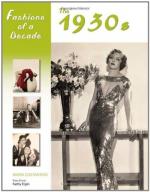|
This section contains 338 words (approx. 2 pages at 300 words per page) |

|
With the Depression undercutting much of his business, Wright turned his attention in the 1930s to urban decentralization, a problem he felt plagued American cities. Disillusioned with urban sprawl, he drew up plans for Broadacre City, a model suburb of planned construction and uniform design. The buildings of Broadacre were to be geometric, deceptively simple, and low to the ground, with Wright's signature overhanging roofs. They would mold to the shape of the land on which they sat or to their environments, whether marked by a river, lake, or hillside. The plans of Broadacre reflected Wright's vision of a democratic society in harmony with nature. Gas stations would be community centers; parks and sports fields would abut government offices and businesses. Houses would come in all sizes, but, reflecting Wright's populism, every family would own its own.
"Usonia."
Wright's house designs constitute some of...
|
This section contains 338 words (approx. 2 pages at 300 words per page) |

|




